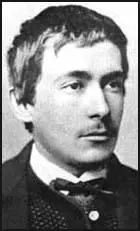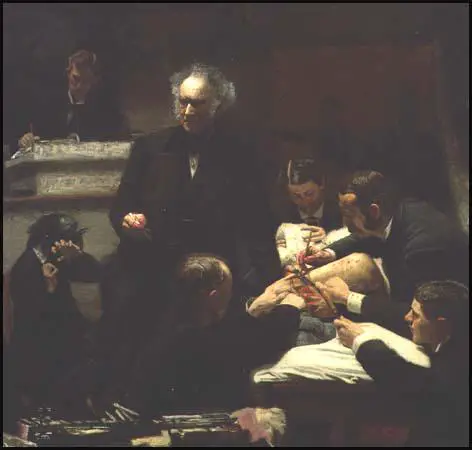Thomas Eakins

Thomas Eakins was born in Philadelphia on 25th July, 1844. After graduating from Central High School he studied for 5 years at thePennsylvania Academy of Fine Arts where he was forced to draw from casts. To compensate for his lack of live models Eakins entered Jefferson Medical College and took regular courses in anatomy.
In 1866 Eakins moved to Paris where he studied at the Ecole des Beaux Arts. He also travelled in Italy, Germany and Spain before returning to Philadelphia in July, 1870.
Robert Henri got to know Eakins. He later recalled: "Thomas Eakins was a man of great character. He was a man of iron will and his will to paint and to carry out his life as he thought it should go. This he did. It cost him heavily but in his works we have the precious result of his independence, his generous heart and his big mind. Eakins was a deep student of life, and with a great love he studied humanity frankly. He was not afraid of what his study revealed to him. In the matter of ways and means of expression, the science of technique, he studied most profoundly, as only a great master would have the will to study. His vision was not touched by fashion. He struggled to apprehend the constructive force in nature and to employ in his works the principles found. His quality was honesty. Integrity is the word which seems best to fit him. Personally I consider him the greatest portrait painter America has produced."
During this period he painted outdoor pictures of his native city and domestic genre pictures of his family and friends in their homes. In 1875 he painted his most famous picture, The Gross Clinic, which aroused controversy because of its detailed depiction of a surgical operation.

Eakins began teaching at the Pennsylvania Academy of Fine Arts in 1876. He was attacked for his radical ideas, particularly his insistence on working from nude models. In 1886 he was forced to resign after allowing a mixed class to draw from a completely nude male model.
Eakins, who by the 1880s had only managed to sell nine pictures for a total of $2,000 now decided to concentrate on portraiture. However, commissions were rare and most of his portraits were of his friends and individuals who he admired and offered to paint them without payment.
Although ignored in his lifetime, the teachings of Robert Henri, John Sloan and George Luks helped to continue his influence in the 20th century.
Thomas Eakins died in 1916.
Primary Sources
(1) Robert Henri, open letter to Art Student League, (29th October, 1917)
Thomas Eakins was a man of great character. He was a man of iron will and his will to paint and to carry out his life as he thought it should go. This he did. It cost him heavily but in his works we have the precious result of his independence, his generous heart and his big mind. Eakins was a deep student of life, and with a great love he studied humanity frankly. He was not afraid of what his study revealed to him.
In the matter of ways and means of expression, the science of technique, he studied most profoundly, as only a great master would have the will to study. His vision was not touched by fashion. He struggled to apprehend the constructive force in nature and to employ in his works the principles found. His quality was honesty. "Integrity" is the word which seems best to fit him. Personally I consider him the greatest portrait painter America has produced.
